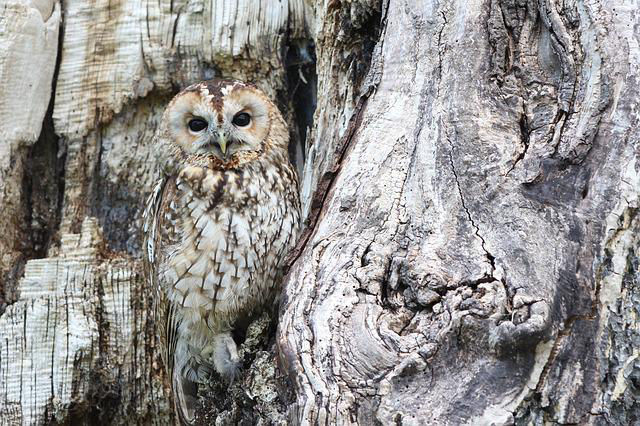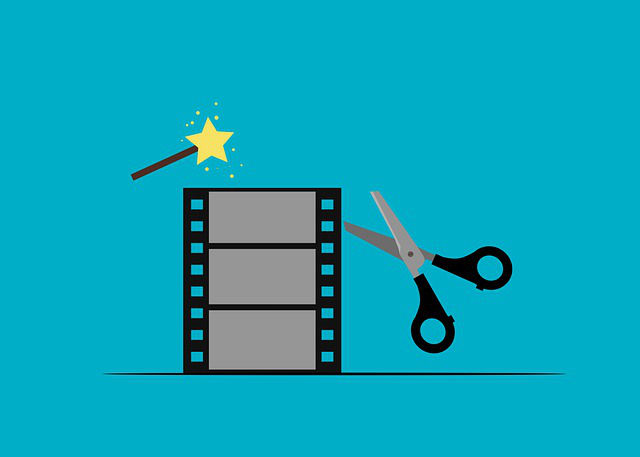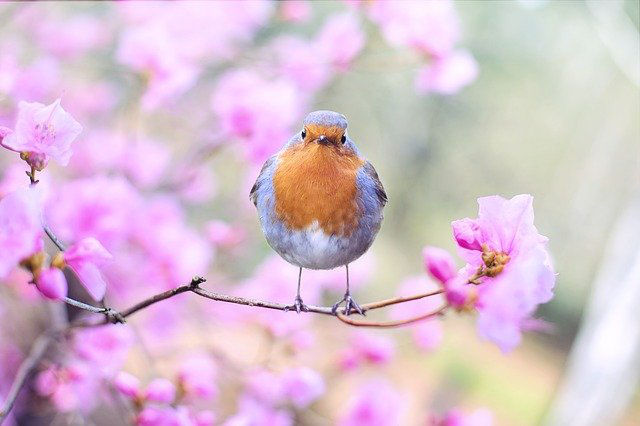10 Wildlife Filmmaking Tips

Wildlife filmmakers have to deal with the dangers and unpredictability of filming in the wild, but with some careful preparation, they can capture amazing footage. This blog post will give you ten tips for wildlife and natural history filmmaking. Whether you're a beginner or an experienced filmmaker, these tips will help you improve your work. Stay safe and have fun!
Getting Close to Your Subject
Wildlife filmmaking is about more than just pointing a camera at an animal and pressing record. To capture the essence of your subject, you need to get close - close enough to see the details that make them unique, but not so close that you disrupt their natural behaviors. Of course, getting close to wild animals is easier said than done. One of the best ways to do it is to find a natural place where the animal feels comfortable and spend time observing them from a distance. Once they get used to your presence, you can start to experiment with different camera techniques and lenses to get the shots you want.

First, you can use a telephoto lens to get close without disturbing the animals. This is often the best option when filming shy or wild animals. You can capture a lot of detail with this lens, but not the animal's surroundings, for that you would need a wide-angle lens. A wide-angle lens can help you get shots of larger animals, such as elephants or rhinos in their natural habitat. Finally, you can use a drone to get closer than you ever could on foot. This is an increasingly popular option, but it's important to be aware of the laws and regulations of each area surrounding drones from being used in a way that disturbs or harasses animals. By following these tips, you'll be able to get the close-up shots you need while respecting the welfare of your subjects.
Camouflage Yourself
When it comes to wildlife filmmaking, one of the best things you can do is use the natural surroundings to your advantage. For example, in New Zealand, there are plenty of camera traps that have been set up by researchers to capture footage of rare and elusive wildlife. By utilizing these camera traps, they can get stunning shots that would otherwise be impossible to obtain. In addition, by being aware of the natural surroundings, you can also help to minimize the impact that your filming has on the environment. For instance, you can avoid disturbing nocturnal wildlife by choosing to film during the day. By following these simple tips, you can help to maximize your chances of getting some great shots.

Follow the Animal's Lead
Wildlife filmmaking is a delicate art. Even the most experienced filmmakers can find themselves struggling to get good shots of shy or elusive animals. To get the best shots, industry professionals must be able to anticipate the actions of their wild subjects. However, this is often easier said than done. The key is to follow the animal's lead. Rather than trying to impose your agenda on the situation, let the animal dictate the terms and go with the flow. By keeping the camera rolling and reacting to the animal's movements, filmmakers can capture moments that would be impossible to plan for in advance. By following the animal's lead, you're more likely to end up with shots that look like they came from National Geographic, rather than a home video camera. This approach was popularized a long time ago, and it continues to be used by many of the best in the business. Of course, this tip is just one of many that industry professionals use to get great wildlife footage. But it's a good place to start if you're new to wildlife filmmaking.

Patience is Key
Any filmmaker will tell you that patience and observation are keys to success. This is especially true when it comes to wildlife filmmaking. Animals are notoriously difficult to predict, and even the most experienced filmmaker can't always control their behavior. By taking the time to study the animals' habits and patterns, filmmakers can gain a better understanding of when and where they are likely to be active. And, when the time comes to shoot, being patient and prepared can mean the difference between getting the perfect shot and coming away empty-handed.

Here's a quote from an anonymous wildlife filmmaker about this. "The key to getting great wildlife footage is to spend a lot of time observing the animals in their natural habitat," he explains. "You have to be patient and wait for the right moment to capture them on film." Of course, it's not as easy as it sounds. Documentary filmmaking is unpredictable by nature, and wildlife films are no exception. But he says that's part of the appeal. "For me, the challenge of wildlife filmmaking is what makes it so rewarding. There's nothing more exhilarating than finally capturing that perfect shot after hours of waiting."
Lightweight Equipment
Wildlife filmmaking is a process that requires both artistry and technical skill. One of the most important challenges is simply getting close enough to the wildlife to get good footage. This is where having lightweight, portable equipment comes in handy. The lighter your equipment, the easier it is to carry long distances and set up quickly. And, since you never know when a wildlife encounter will happen, being able to move quickly and set up quietly is essential for getting quality footage. Of course, technology has also played a role in making wildlife filmmaking more accessible. Today's cameras are smaller and more efficient than ever before, meaning that even amateur filmmakers can produce show-stopping footage. So, if you're dreaming of making your wildlife documentary, don't let the challenges discourage you. With a little dedication and perseverance, anyone can achieve their dream of becoming a wildlife filmmaker.

Stay Safe
Wildlife filmmaking can be an exciting and dangerous profession. Filmmakers often find themselves near wild animals, putting themselves at risk of injury or even death. In addition, filmmakers work in wild places that are often remote and inaccessible, making it difficult to get help in case of an emergency. As a result, safety is a top priority for wildlife filmmakers. There are a few simple steps that filmmakers can take to help ensure their safety. First, always be aware of your surroundings and stay alert for potential dangers. Second, wear appropriate clothing and equipment for the environment you'll be working in. And finally, make sure you have a reliable way to communicate with the outside world in case of an emergency. By following these simple safety guidelines, wildlife filmmakers can help ensure that they stay safe while doing what they love.

Tell a Story
Wildlife filmmaking is a unique and challenging form of filmmaking that requires both a passion for wildlife and a keen eye for composition. While it can be tempting to simply capture random shots of animals in their natural habitat, a professional wildlife filmmaker knows how to tell a story with their footage. Sure, it's great to get some amazing shots of animals in their natural habitat, but a well-told story will really capture viewers' attention. After all, plenty of wildlife films out there just feature random shots of animals. To stand out from the crowd, try focusing on a specific story you want to tell. This could be anything from a day in the life of a particular animal to a documentary about the declining population of a particular species. Whatever it is, make sure it's something that will resonate with viewers. Do your research on the topic of your documentary or film to make sure you don't lose control over the "science communication" during the process of filming. If you can tell a compelling story with your wildlife footage, you'll be well on your way to making an impactful film that could premiere at film festivals or be picked up by National Geographic.

Frame Your Shots
As a wildlife filmmaker, your job is not only to capture the attention of your audience but also to educate and inform them about the natural world. One way to do this is to frame your shots well, using the rule of thirds to create a more interesting composition. In filmmaking, the rule of thirds is a guideline that suggests that scenes should be divided into nine equal parts by two horizontal and two vertical lines. The theory behind the rule is that it helps to create more visually appealing and balanced compositions. When composing a shot, film directors and cinematographers should try to place the main subject of the scene at one of the intersections formed by the lines. Additionally, they should also align other important elements, such as horizons and buildings, with the lines. By following the rule of thirds, filmmakers can create more eye-catching and engaging shots. However, it is important to note that the guideline is only a suggestion, and there are no hard-and-fast rules when it comes to composition. Ultimately, filmmakers should use their creativity, discretion, and an alternative way to compose shots that best fit the story they are trying to tell.

A good composition can make all the difference in creating an engaging and visually appealing film. When planning your shots, think about the mood you want to create and the story you are trying to tell. Pay attention to the details and make sure each element works together to create a cohesive whole. In the editing process, be sure to select only the best shots that help advance your story. With careful planning and attention to detail, you can create a wildlife film that is both enjoyable to watch and informative.
Edit Your Footage
When it comes to wildlife filmmaking, the editing process is just as important as the filming itself. A well-edited film will flow smoothly and engage viewers from start to finish, while a poorly edited film will feel jarring and disjointed. To create a polished film, start by sorting through your footage and selecting the best shots. Then, begin piecing the shots together in a way that tells a coherent story. Pay attention to the pacing of the film, and don't be afraid to experiment with different edits until you find something that feels right. With a little time and effort, you can turn your raw footage into a beautifully edited wildlife film.

Take Courses
Wildlife filmmaking is a challenging and rewarding field, but it takes more than a love of nature to be successful. To give yourself the best chance at success, consider taking courses in wildlife filmmaking. Montana State University offers an M.F.A. in Science and Natural History Filmmaking, which is considered by some to be one of the best programs in the world. It provides students with the skills and knowledge they need to be successful in the field. The program is based in Bozeman, Montana, and students have the opportunity to learn from a range of professionals, including filmmakers, production managers, biologists, and conservationists. The location of Montana provides access to a variety of wildlife, and the coursework covers topics such as camera techniques, editing, and storytelling. The program is also designed to provide students with the opportunity to develop a professional portfolio.

Summary
By following these tips, you'll be on your way to creating amazing wildlife footage that tells a story. Remember to always keep safety in mind and have patience while filming; the perfect shot may not happen immediately, and always keep learning and growing. With practice, you'll be able to tell amazing stories that capture the beauty and wonder of the natural world. What tip do you find most useful?

